![]()
![]()
![]()
Use LEFT and RIGHT arrow keys to navigate between flashcards;
Use UP and DOWN arrow keys to flip the card;
H to show hint;
A reads text to speech;
130 Cards in this Set
- Front
- Back
|
Fluid transported within lymph vessels originates as interstitial fluid surrounding tissue cells |
LYMPH |
|
|
Components of lymph |
Water Dissolved solutes Small amount of protein Sometimes foreign material |
|
|
Accumulation of interstitial fluid due to interference with lymphatic drainage |
Lymphedema |
|
|
2 types of lymph ducts |
Right lymphatic duct Thoracic duct |
|
|
Smallest lymph vessels. Closed- ended vessels that absorb interstitial fluid |
Lymphatic capillaries |
|
|
Where is lymphatic capillaries located |
They are scattered through areolar connective tissue among blood capillary networks |
|
|
Lymphatic capillaries are interspersed throughout areolar connective tissue among blood capillary network except ___ |
Those within red bone marrow, spleen, the central nervous system |
|
|
Lymphatic capillaries located within the gastrointestinal GI tract. Allow for the absorption of the lipid soluble substances |
Lacteals |
|
|
Cause of lymphedema |
Could be caused by blockage of lymph vessel |
|
|
Regions drain by thoracic duct |
From left side of head and neck Left upper limb Left of thorax Abdomen Both Lowe limbs |
|
|
What regions are drain by right lymphatic duct |
Right side of head and neck Right upper limb Right of thorax |
|
|
Location of red bone marrow |
Within spongy bone of certain bones |
|
|
Function of bone marrow |
Formation of all formed elements Site of B-lymphocyte maturation |
|
|
When fluid and solutes flow easily throught capiralis back into the blood |
Reabsorption |
|
|
Where is thymus located In adults and children |
Adults: superior mediastinum Children: Anterior and superior mediastinum |
|
|
Function of lymph node |
Filter lymph. Remove unwanted substances |
|
|
General location of lymph nodes |
Clusters are present in these regions: Axillary Inguinal Cervical |
|
|
Location of spleen |
Left upper quadrant of abdomen. Near 9th _11th rib Wraps partially around stomach |
|
|
3 major functions of spleen |
1. Filters blood 2. removes aged erythrocytes &platelets 3. Serves as erythrocyte &platelet reservoir |
|
|
Order that lymph travels through |
Lymphatic capillaries Lymphatic vessels Lymphatic trunks Lymphatic ducts |
|
|
When blood plasma leaks out of capillaries is called |
Interstitial fluid |
|
|
Lymphatic capillaries are usually smaller or larger in diameter than blood capillaries? |
Larger |
|
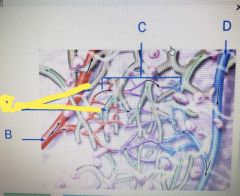
|
Lymphatic capillary |
|

|
Capillary bed |
|
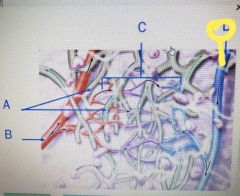
|
Venule |
|

|
Arteriole |
|
|
Lacteals pick up diatery____ |
Lipids |
|
|
Lymphatic vessels resemble ____ |
Small veins |
|
|
What similarities lymphatic vessels and veins have |
They have 3 tunics They have valves in their lumen |
|
|
Bone marrow is found within spongy bone in which locations? |
Vertabrae Roofing bones of Skull Sternum Ossa coxae Epihysis of femur and humerus |
|
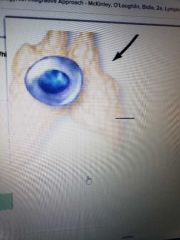
What lymphocyte matures here |
T- lymphosite maturation at the thymus |
|
|
Where B lymphocytes mature |
In bone |
|
|
Clusters of lymphatic nodules with in walls of gastrointestinal GI, reproductive, urinary,and respiratory tracts |
MALT |
|
|
Masses of lymphatic tissue that protect against inhaled and ingested materials. Found in the pharynx |
Tonsils |
|
|
lymph node components |
Afterent lymphatic vessels Efferent vessel Dense connective tissue capsule Outer cortex |
|
|
What lymph node component brings lymph to node |
Afferent lymphatic vessels |
|
|
What component of lymph node drains a lymph node |
Efferent vessel |
|
|
3 main groups of tonsils |
Pharalyngeal Palatine Lingual |
|
|
MALT |
Mucosa'associated lymphatic tissue. |
|
|
Helps defend against foreign substances. Prominent in small intestines |
MALT |
|
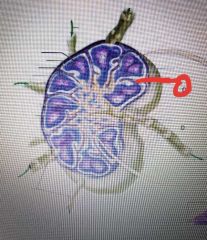
|
Trabecula |
|
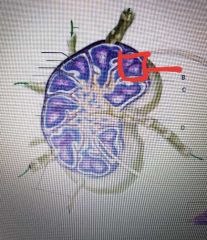
|
Capsule |
|
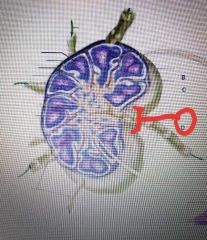
|
Hilum |
|
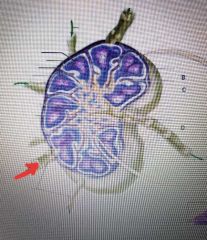
|
Valve |
|
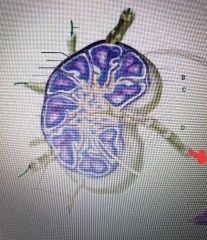
|
Efferent |
|
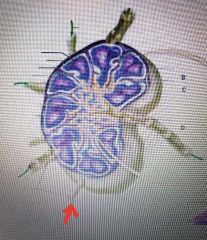
|
Afferent |
|
|
Which part of the spleen serves as a blood reservoir and storage site for erytholrocytes and platalets |
Red pulp |
|
|
Which part of the spleen monitors blood for foreign material |
White pulp |
|
|
What lymphatic structures are involved in the formation and maturation of lymphocytes? |
Primary structure: RED bone marrow Thymus |
|
|
What lymphatic structure serve to house lymphocytes and other immune cells following their formation and are the sites where an immune response is initiated? |
Secondary structure: Lymph nodes Spleen tonsils Lymphatic nodules MALT |
|

|
Spleen |
|

|
Lymph nodes |
|
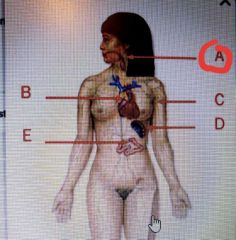
|
Tonsils |
|
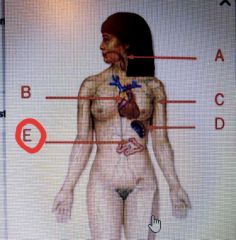
|
MALT |
|
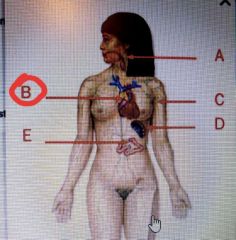
|
Thymus |
|
|
Which tonsils are most commonly affected by tosillitis |
Palatine tonsils |
|
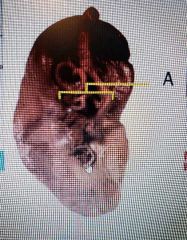
|
Hilum |
|
|
Largest lymphatic organ in the body |
Spleen |
|
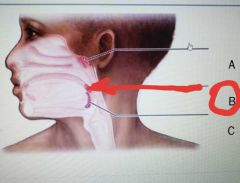
|
Palantine |
|
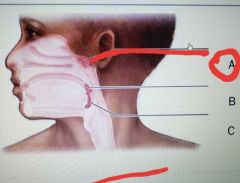
|
Pharangeal tonsils |
|

|
Lingual tonsil |
|
|
Bloods flow through the spleen in what order? |
Spleen artery Central artery of white pulp Splenic sinusoids of red pulp Splenic vein |
|
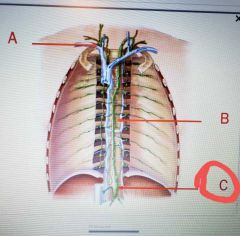
|
Cisterna chyli |
|
|
Which lymphatic structures have a complete capsule |
Lymph node Spleen |
|
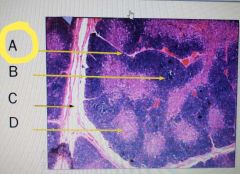
|
Trabecula |
|
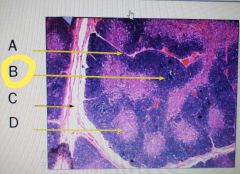
|
Cortex |
|

|
Capsule |
|
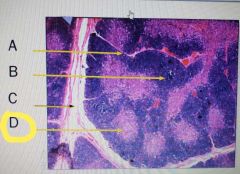
|
Medulla |
|
|
What kind of drainage occurs in the red pup spleen |
Venous |
|
|
The____ filters the blood for foreign material, where as the ______ filter the lymph for foreign material |
SPLEEN, lymph nodes |
|
|
What cell type found in the thalamus is found in the medulla |
Mature T lymphocytes |
|
|
What cell found in the thymus. Found in the cortex |
Immature T lymphocytes |
|
|
5 major categories of infections agents |
Bacteria Viruses Fungi Protozoans Multicellular parasites |
|
|
Fragments of infectious proteins. Cause disease in nervous tissue |
Prions |
|
|
Eukaryotic cells without a cell wall. Intracellular and extracellular parasites . E.g. Malaria and trichomoniasis |
PROTOZOANS |
|
|
Monomicroscopic. Take nourishment from host they live in. E.g. tapeworm |
Multicellular parasites |
|
|
5 major categories of infectious agents |
Bacteria Viruses Fungi Protozoans Multicellular parasites |
|
|
Single-celled prokaryotes. Small cell with membrane and cell wall. Most harmless, some virulent. E.g. streptococcal (strep throat) |
Bacteria |
|
|
Infectious agent made of pieces of DNA or RNA in a cell protein. Smaller than a cell. They must enter a cell to reproduce and replicate. E.g. common cold, Ebola, chicken pox |
Virus |
|
|
Small proteins that regulate immune activity. Produced by innate and adaptive system |
Cytokines |
|
|
Effects of cytokines |
-Signaling cells -Controlling development and behavior of Inmune cells -Regulating inflammatory response -Destroying cells |
|
|
4 cytokine categories |
Interleukin (IL) Tumor necrosis factor (TNF) Colony-stimulating factor (CSF) Interferon (INF) |
|
|
Immunity present at birth |
Innate |
|
|
Immunity acquired |
Adaptive |
|
|
Type of immunity that responds immediately to potential harmful agents, and it is nonspecific |
Innate immunity |
|
|
Type of immunity that takes several days to be effective.responds to antigens |
Adaptive inmunity |
|
|
3 significant events that occur I. The lifetime of a lymphocyte |
Formation Activation Effector response |
|
|
Positive selection of t-lymphocyte |
Ability to bind thymic epithelial with MHC molecules. If it binds bnb it survives |
|
|
Infectious agents that are eukaryotic cells |
Protozoans Fungi Multicellular parasites |
|
|
Type of infectious agent is a prokaryotic |
Bacteria |
|
|
Obligate intracellular parasites |
Virus |
|
|
Molds and yeast are types of |
Fungi |
|
|
MLaria is an example of a disease caused by what agent? |
Protozoans |
|
|
Where the alveolar macrophages found |
Lungs |
|

|
Multicellular parasites |
|
|
1_2 micrometers in size, single-celled organism |
Bacteria |
|
|
Order of events of inflamation |
Release of chemicals Vasodilation Recruitment of inmune cells Delivery of plasma protein |
|
|
Process in which Natural killer cells are able to detect unhealthy cells |
Inmune surveillance |
|
|
Which cell has effector response to destroy infected cells via apoptosis |
Cytotoxic T cell |
|
|
Which cell type has effector response to produce antibodies |
Plasma cell |
|
|
Which cell has effector response to release interleukins and cytokines to simulate other cells |
Helper T cells |
|
|
Antimicrobial substances release by skin |
Lysosyme sebum defensins dermicidin |
|
|
Antimicrobial substances released by mucosal membrane |
Lysozyme Defensindinm ok nuglobin A |
|
|
Benefits of fever |
Promotion of interferon activity Inhibition bacteria reproduction Accelerated tissue repair Increase adaptive inmunity activity |
|
|
After lymphocytes are formed they are tested to see if they are functional. Functional lymphocytes are: |
Immunocompetent (Ability to bind to agent and respond to it) |
|
|
B cell activation events in order |
1. Cell binds free antigen 2. Cell engulfs antigen and presents it to a T helper cell. 3. Activated helper T cell releases IL4 4. Cell proliferates |
|
|
When the body fails to distinguish between foreign and self antigens |
Autoimmune disease |
|
|
Immunoglobulin LgG |
It can cross the placenta Predominary antibody in the lymph It can neutralize snake venom |
|
|
Antibody-mediated immunity is also called ____ immunity |
Humoral |
|
|
Examples of phagocytes |
Neutrophils Macrophages |
|
|
immonuglobulin most predominant antibody in the lymph |
IgG |
|
|
5 major immunoglobulin classes |
IgG IgM IgA IgD IgE |
|
|
Activated helper T cells are required to activate which cells? |
B Cells Cytotoxic T cells |
|
|
The concentration of antibodies against a specific antigen in the blood |
Titer |
|
|
Process by which cells migrate along chemical gradients |
Chemotaxis |
|
|
Nonspecific process that occurs in vascularized tissue |
Inflamation |
|
|
Antibody formed in response to parasitic infections and allergies, and has the effect of activating mast cells and basophils |
IgE |
|
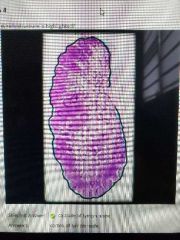
|
Capsule of lymph node |
|
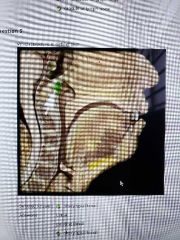
|
Pharangeal tonsils |
|
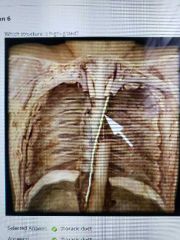
|
Thoraxic duct |
|
|
Cytotoxic t-lymphocytes destroy infected cells by releasing |
Performing and granzymes |
|
|
Active immunity requires______ |
Direct encounter with antigen |
|
|
Which type of lymphocyte has co receptors that assist in the interaction of lymphocytes with an antigen presenting cell? |
T lymphocyte |
|
|
In terms of their chemical structure, cytokines are ____; their function is to serve as_____ |
Proteins/chemical messengers |
|
|
Upon activation, a T lymphocyte proliferates to form____ |
Clones and memory cells |
|
|
When leaving the red bone marrow, what t lymphocytes have? |
CD 4 and CD8 proteins |
|
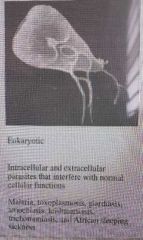
|
Protozoans |
|
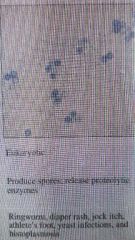
|
Fungi |
|
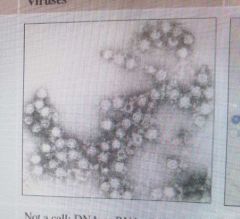
|
Virus |
|
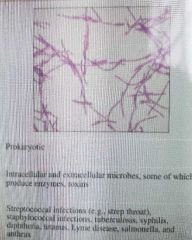
|
Bacteria |

